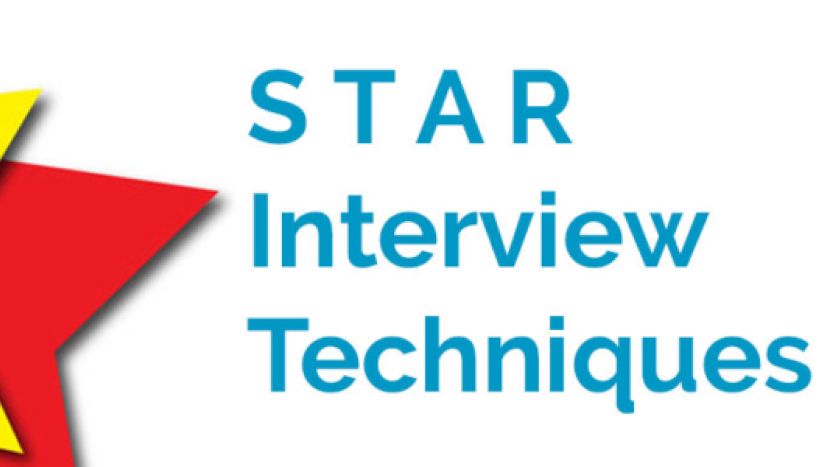What is the STAR technique?
31 May 2018

The STAR technique is a way to structure your answers to competency-based questions either on an application form or an interview. Employers often ask how you have demonstrated, in the past, the competencies that you will need to use in the role for which you are applying. Often at job interviews nerves can take over, even if you have done a lot of preparation, research and planning beforehand. The STAR technique allows you to focus and structure your answers effectively, demonstrating the results achieved by undertaking actions to specific tasks and the results achieved. Employers are looking for candidates that can ultimately benefit the company or organisation. The STAR Technique can be used BOTH in job interviews and applications and is highly regarded amongst careers professionals and employability advisers and in the world of recruitment.
Use the STAR Technique to structure your answers as follows:
S – Situation: Set the scene. Here open with a brief description and explain the role and situation. Where were you? What were you doing? Pick a specific example of a time when you have demonstrated the desired skill and give enough information to allow someone to understand the context of your example.
T – Task: This is still the introduction but provides some context, and it will explain your role and what was expected of YOU. Provide details of the task you were faced with or what you were trying to achieve? What was your desired outcome?
A – Action: Here you need to describe the specific actions that you took to complete the task, and this is the most substantial part and should comprise of 50 - 70% of the answer. What specifically did you do? How did you handle the situation? This should make up the main body of your response and remember if you are discussing working with the team don’t overuse “we”. The recruiter wants to know what you did.
R – Result: Close with the result of your efforts. Quantify the result if possible. What happened as a result of the actions that you took? What impact the result had overall on the team, on the company and on you? We are going to go into a lot more examples using the STAR model throughout the course; what was the outcome? Try to make this as specific and positive as you can. Regardless of the outcome, what did you learn? How would you handle it differently next time to improve your performance?
You can demonstrate your skills using examples from all of your recent life, e.g. college, sixth-form, voluntary work, work experience, sports activities, societies, clubs or hobbies and interests. The point is to evidence your skills in a positive manner and to provide a specific example of how and when you used the skill that you are being asked about. When asked a series of such competency questions, use different examples to show evidence of your capabilities.
Putting the STAR Technique into practice
Below are three responses to the same interview question with some feedback on each.
Answer 3 uses the STAR technique.
Question:
Can you give an example of when you have used your initiative successfully?
Answer 1: I used my initiative all the time in my course at college, the group I was in hadn’t been very motivated but since I joined, I think that’s changed.
Feedback: This answer is vague; it’s not giving the employer a specific instance of when the student used their initiative or how it brought about change. Simply stating possession of a skill does not any provide any evidence that you have it!
Answer 2: Yes, I study Media Studies and it was my idea to set up a Facebook page which people liked.
Feedback: This answer doesn’t provide the employer with a clear context and, though it describes the activity, it does not explain why it was needed or what resulted.
Answer 3:
S – Situation: I am in my second year at college undertaking a BTEC Extended Diploma in Media, I noticed that communication between my groups was poor and that we weren’t very active in the lessons. We rarely met and, when we did, not everyone could attend.
T – Task: We were set a practical task to make a short film.
A – Action: I decided to set up a Whatsapp Group to improve communication as I knew all the students used Whatsapp regularly; I initiated discussions and communicated about upcoming meetings and shared ideas and opinions.
R – Result: Soon, other members of the group participated actively and, as a direct result, we met more often to work on our short film. The liveliness of our group led to more people wanting to join us as they were interested in the group. The Whatsapp group is still actively used as the main communication channel. Looking back, I would have talked to others more before setting up the group and tried to ensure a nucleus of early users rather than just my initial solo contributions. That would have ensured a swifter take up and more impact.
Feedback: This answer shows the employer how the student used their initiative effectively. It uses the STAR technique to describe the context, to detail what the student actually did and the effect that these actions had. Finally, the student has revealed their subsequent reflection and awareness of the potential for improvement.
The STAR model Summary
The STAR model, allows you to reflect on your answers, to think carefully about the impact of your involvement in a particular task. It also allows you to manage interaction more effectively, to structure your answers and to consider the positive outcomes of a particular situation. The STAR technique may take practice to perfect but ultimately will put you in a good light. Giving you a competitive edge to becoming a winning contender an effective interviewer!
By Sarfraz Ahmed